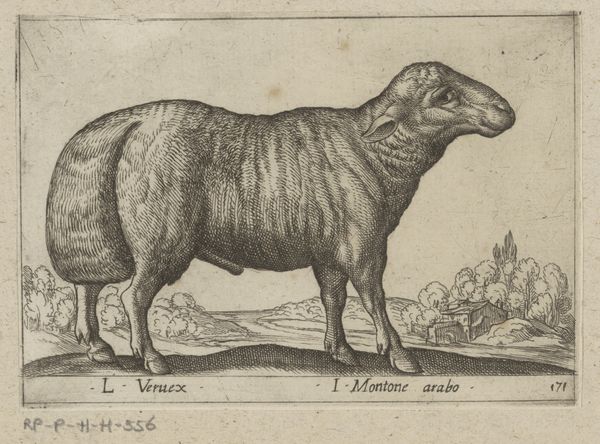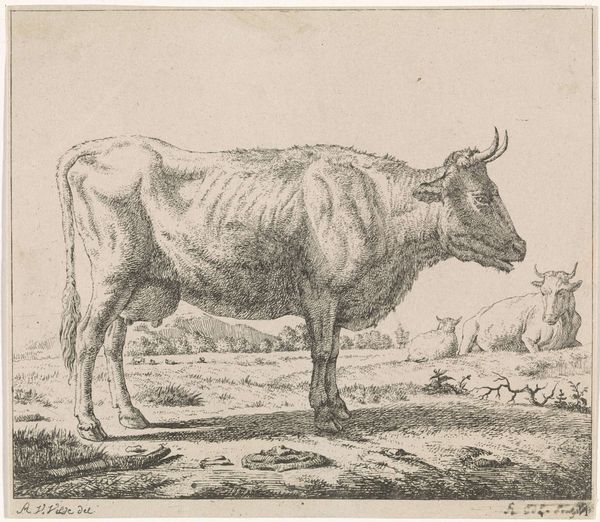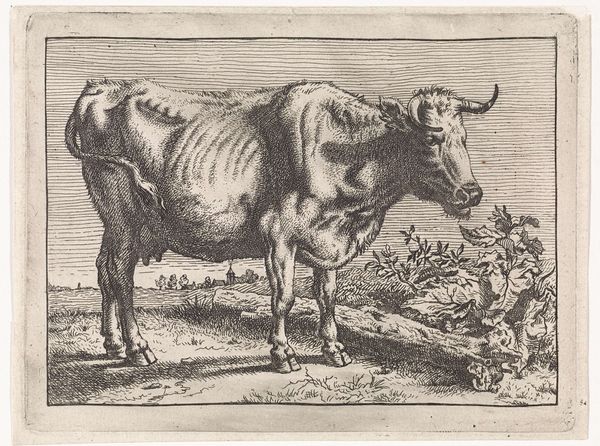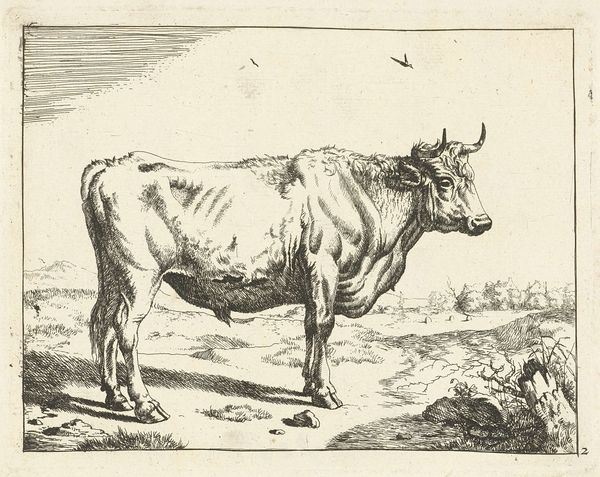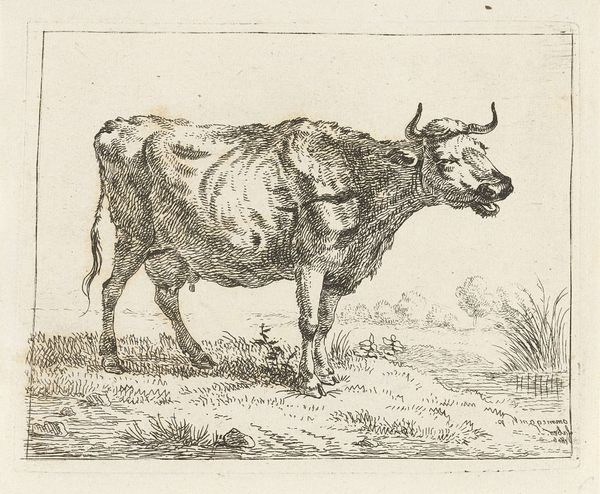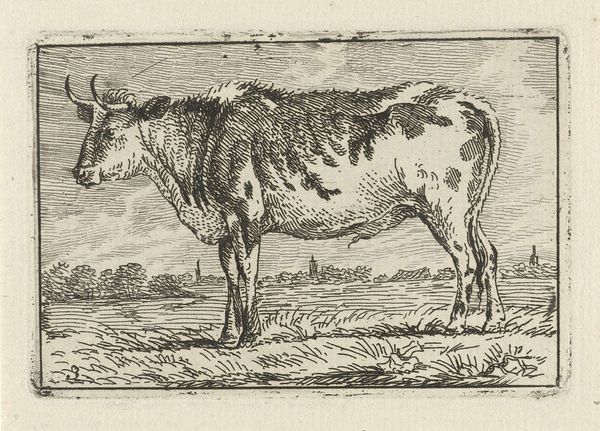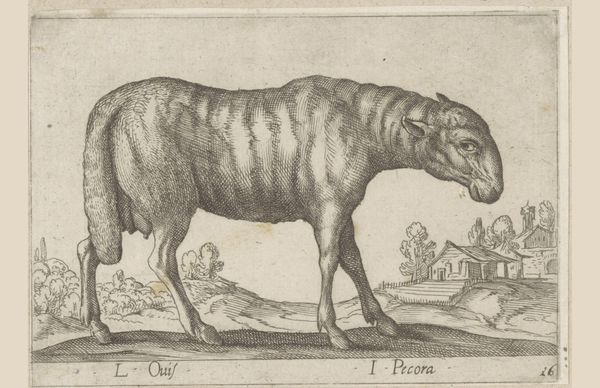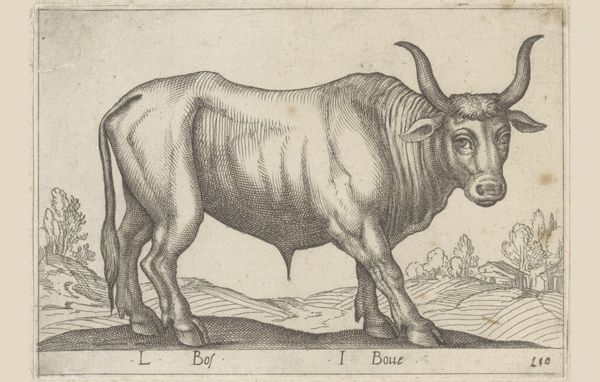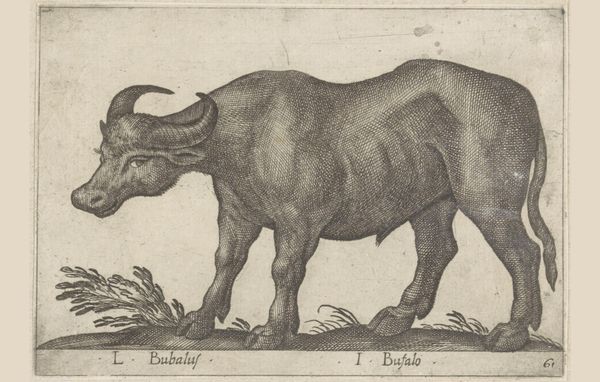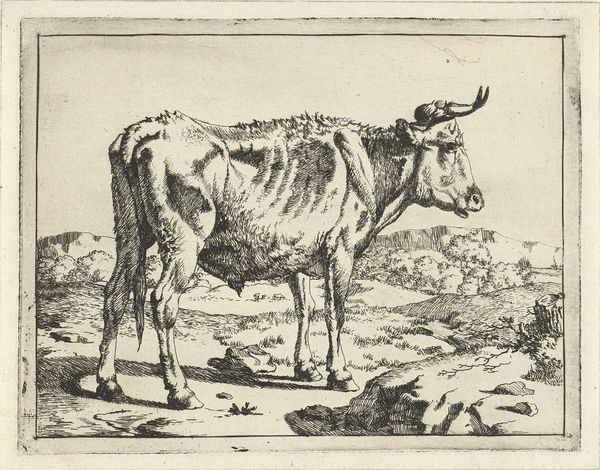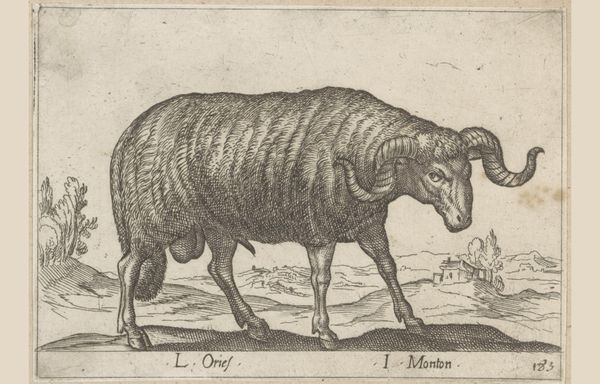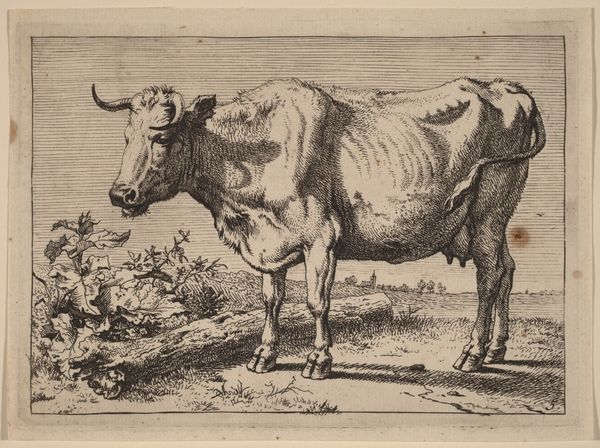
print, etching
#
animal
# print
#
etching
#
landscape
#
genre-painting
#
realism
Dimensions: height 95 mm, width 137 mm
Copyright: Rijks Museum: Open Domain
This engraving of an Ethiopian Sheep was created by Antonio Tempesta around 1608. At first glance, it is a zoological study, an early modern attempt to document the natural world. But, in fact, it is deeply embedded in the social and political context of its time. Made in Rome, it reflects the period's fascination with the exotic and unknown, fuelled by expanding global trade and exploration. The sheep, labelled "Aethiops," connects to the classical and biblical use of Ethiopia as a term for the African continent, or, at least, the parts of it that were known to Europeans. By the 17th century, Africa had become heavily implicated in the transatlantic slave trade, which may subtly inform the image through its visual rhetoric of imperial domination and control over both human and natural resources. The inclusion of human figures in the background could also hint at these social dynamics. To truly understand this print, one must delve into the historical archives: trade records, travelogues, and colonial documents. Only then can we appreciate how representations of the natural world were intertwined with the social, economic, and political realities of the time.
Comments
No comments
Be the first to comment and join the conversation on the ultimate creative platform.
